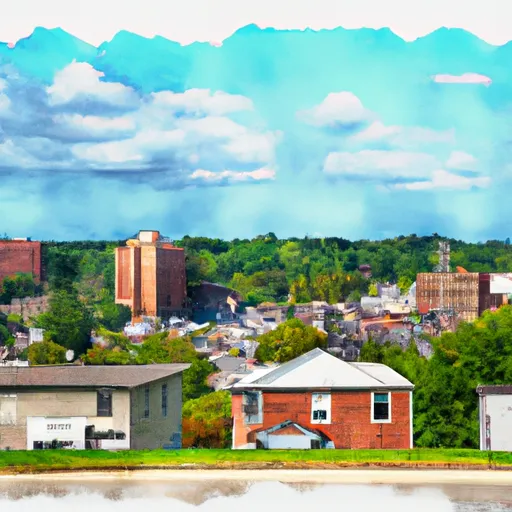°F
°F
mph
Windspeed
%
Humidity











Ravenna, Ohio is a charming city located in Portage County in the northeastern part of the state. The climate in Ravenna is classified as humid continental, characterized by four distinct seasons. Summers are warm and humid with average temperatures ranging from the mid-70s to the mid-80s Fahrenheit, while winters are cold with average temperatures in the mid-20s to mid-30s Fahrenheit, accompanied by snowfall.
The hydrology in Ravenna is influenced by the Cuyahoga River, which passes through the city. The river provides opportunities for fishing, boating, and other water-related activities. Ravenna also has several small lakes and ponds, such as Tannery Pond and West Branch Reservoir, which offer additional recreational opportunities like swimming and picnicking.
Outdoor enthusiasts can explore the numerous parks and trails in Ravenna, such as the West Branch State Park, which offers camping, hiking, biking, and horseback riding trails. The Portage Hike and Bike Trail, part of the Ohio and Erie Canalway, is another popular destination for outdoor recreation, providing opportunities for walking, running, and biking.
In conclusion, Ravenna, Ohio offers a diverse climate, with plenty of outdoor recreational opportunities centered around its hydrology constituents, including the Cuyahoga River, lakes, and parks.
Weather Forecast
Ravenna receives approximately 1050mm of rain per year, with humidity levels near 81% and air temperatures averaging around 10°C. Ravenna has a plant hardyness factor of 6, meaning plants and agriculture in this region thrive during a short period during spring and early summer. Most plants will die off during the colder winter months.
Regional Streamflow Levels
17
Cubic Feet Per Second
3,720
Cubic Feet Per Second
1,420
Cubic Feet Per Second
14
Cubic Feet Per Second
Nearby Camping
| Camping Area | Reservations | Toilets | Showers |
|---|---|---|---|
| Silver Springs - Stow | |||
| Punderson State Park | |||
| Perry Township Park | |||
| Petersburg Boat Landing | |||
| West Branch State Park |



